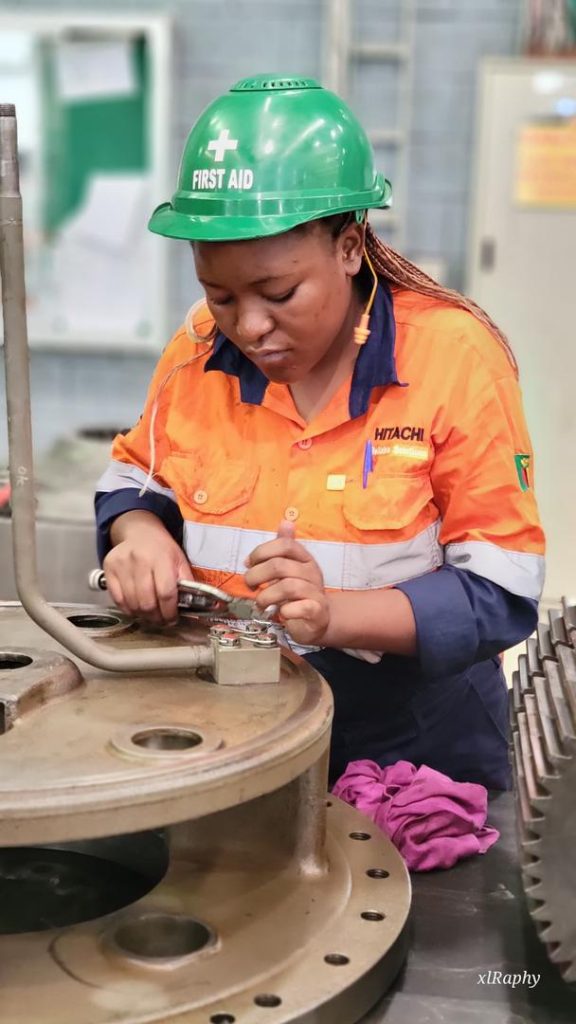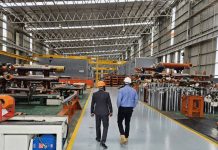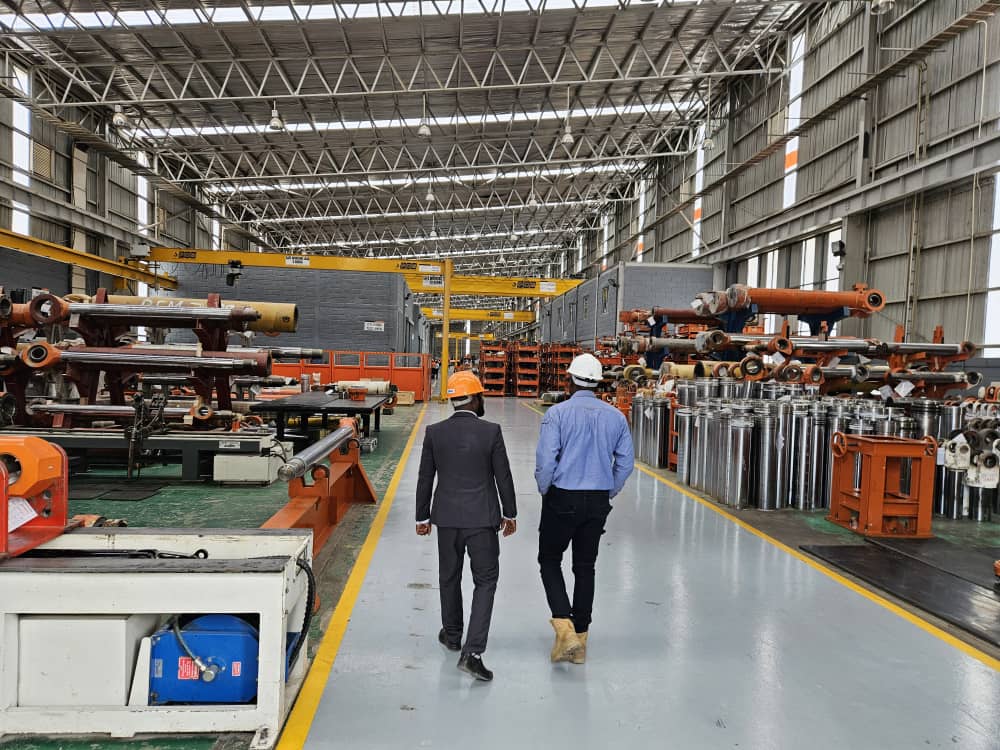Since its independence over 60 years ago, Zambia has strived to become a fully industrialised nation. Hitachi’s $25 million expansion of its Remanufacturing and addition of an Engine Facility in Lusaka Province – officially opened last week by President Hakainde Hichilema – is a significant step in the right direction, and all because of a partnership with a world-class mining operation.
The decision to open this facility is a result of Hitachi’s more than 15-year partnership with First Quantum Minerals’ Kansanshi Mining Plc, where Hitachi dump trucks are integral to mining operations. Without consistent demand from a longstanding client like Kansanshi Mine, this significant investment in Hitachi’s expanded facility could not have come to fruition.
Herein lies the significance of this facility. It is an organic, market-driven industrial development.
What does the Hitachi Remanufacturing and Engine Facility mean for Zambia?
Prior to the expansion, the rebuild section at Hitachi’s facility only had capacity to refurbish and manufacture a limited number of components per year. Jim Whyte, Regional Business Development Manager at Hitachi Construction Machinery Zambia explains: “This expansion now gives us the capability to handle large engines for selected models and other complex components locally in Zambia. Importantly, it also creates further employment opportunities, as well as the chance for our existing employees to step up to more high-tech roles.”
Historically, when a dump truck’s engine failed, it had to be sent to South Africa to be rebuilt, taking the truck out of commission for a few weeks at a time. Now, the whole process can take place on home soil, from start to finish.
“This cuts down a good two to three weeks on the turnaround of engine maintenance,” explained Kansanshi Mine Maintenance Manager, Mr Gregory Mwansa. “We will no longer face a situation where a truck is parked and waiting for an engine from South Africa, so First Quantum can stay busy doing what we do, which is mining.”
Indeed, maximising time online is crucial for increasing copper production. “As Kansanshi undergoes its own major expansion, the availability of a reliable, high-capacity mining fleet is essential,” says Kansanshi Mine Operations Manager, Mr Rees Magrath.
“As Kansanshi undergoes its own major expansion, the availability of a reliable, high-capacity mining fleet is essential.”
Company President at Hitachi Construction Machinery Zambia (HCMZ), Mr Nobuhiko Saito, echoed this sentiment, saying: “This expansion represents more than just infrastructure growth. It symbolises our collective vision for a sustainable, efficient, and technologically advanced mining sector that supports Zambia’s goal of producing three million metric tonnes of copper annually by 2031.”
A vote of confidence for Zambia
The decision to invest in and expand this facility in Zambia is a vote of confidence from Hitachi. But, beyond keeping work in Zambia, it will also attract business from neighbouring mining countries like the DRC, Mozambique – and, even, South Africa.
Speaking at the facility’s official launch on 5 June 2025, President Hakainde Hichilema called Hitachi’s expanded facility “a bold statement that Zambia is not only a leader in mining but also a regional hub for high-value industrial services.”
He also reminded attendees that the mining sector remains the backbone of the country’s economy, with the power to drive sustainable economic growth. He added: “We are committed to ensuring that the benefits of this growth extend to our people through job creation, skills development, and increased participation of Zambians in the value chain.”
All of this – “job creation, skills development, and increased participation of Zambians in the value chain” – is happening here organically, having sprung from a real need.
All of this – “job creation, skills development, and increased participation of Zambians in the value chain” – is happening here organically, having sprung from a real need.
“HCMZ is setting an inspiring example for the entire nation,” said the President. “Zambia is moving beyond being an exporter of raw materials to becoming a country renowned for producing value-added products and advanced manufactured goods.”
Beyond employment: becoming a regional skills hub
In the short term, the facility will create over 100 highly specialised jobs. But this project will have an impact far greater than the direct employment numbers. This is much more than a workshop – it requires highly technical skill sets that Hitachi is passing on to Zambian engineers.
Several existing employees will be trained up in the highly technical set of skills required to remanufacture engines for equipment like Hitachi’s EH4000 dump trucks. Twenty-five year-old Thandiwe Banda hopes to be one of them.
Ms Banda was the first woman to start working at Hitachi as an artisan mechanic in October 2020, and today she’s one of two. After graduating from Northern Technical College (NORTEC) with an Advanced Certificate in Heavy Duty Repair and completing several months of practical training in the field, she applied for an internship at Hitachi, and was soon offered a full-time position.
Would she be interested in gaining the skills necessary to work on engines? Absolutely. “Learning new things every day is what I enjoy most about my job,” she said.

If people like Ms Banda move into more specialised roles, new hires will naturally need to replace them, which she sees as a positive thing. “There are a number of unemployed youth who have completed the course I studied, so if positions like mine became vacant, that would be a very good development.”
Owen Nyirenda, another heavy duty mechanic, works alongside Ms Banda in what’s informally called “the engine room”. In Mr Nyirenda’s case, working on more specialised engine components would, in a sense, mean getting closer to reaching his full potential.
“Right now, the work I do only represents a percentage of my field of study. I was trained on all types of engines at NORTEC, so I’d be very interested to apply these skills – it’s part of what I studied.”
He says he’s proud to be part of a company that’s playing an important role in Zambia’s economic development. “Business wise, this is a really positive development. We are located in the middle of countries like DRC and Mozambique so it will be much easier to bring equipment in and out of Zambia, reducing downtime if there is a breakdown. The other side is that locally, in Zambia, we will gain skills – so it’s not only a business development.”
This exciting new partnership signals a shift in technical services to Zambia, giving the country an opportunity to put its best foot forward as a leader in the region – and beyond. During the facility’s 5 June launch, President Hichilema revealed that Toyota Japan has expressed interest in potentially expanding in Zambia beyond the automotive sector, and into pharmaceuticals and renewable energy.
Hitachi’s new Zambian facility, with its infusion of cutting-edge technology, should give those with limited interpretations of ‘local content’ pause for thought. Too often, fixed quotas and top-down ‘local content’ regulations benefit a select few, without promoting the skills necessary to deliver jobs and opportunities for the wider economy. Attracting Hitachi to invest in this project, on the back of consistent demand from a world-class mining operation, has opened up for the Zambian employees of Hitachi the opportunity to develop internationally competitive skills to build their own paths, wherever their future takes them.
























It’s amazing